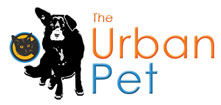The Holy Grail
- Early socialization is imperative for proper emotional development. It’s also important to socialize your puppy to touch. You want to massage your dog. Massage the ears, teeth, gums and feet. This way your dog is becoming comfortable being handled which is important when goes to vet to get his ears checked, teeth cleaned or to the groomer to have his nails clipped.
- It’s important for your dog to see you as the “provider.” Your dog must earn everything! Treats, praise, toys and sleeping in the bed are privileges that should be given out as rewards for good behavior. This is a sure way to achieve the almighty leader-follower relationship.
- When it comes to chew toys for young puppies the rule of thumb is no cloth or rope chew toys. Cloth chew toys are similar to pillows and socks. Rope chew toys have the same frayed ends as Afghans and rugs. It’s best to save these toys until they’re older, past the chewing stage. Instead, rubber chew toys and stuffed bones.
- Getting your dog out on daily walks is important no only for exercise but for mental stimulation. Regardless how big your yard may be, to your dog it quickly becomes about as exciting as watching paint dry and boredom is a leading cause in destructive behavior. And also, a tired dog is a well-behaved dog.
- One of my favorite pieces of “occupational therapy” for dogs is a sterilized bone. It’s hollow in the center and you can stuff it with peanut butter or doggy jerky. Put this in your puppy’s crate and it will keep your puppy entertained. Bully sticks and pressed rawhides under supervision. Antlers are great for big chewers!
- Although many parks are equipped with watering facilities for dogs, most are not and those that are, are often unsanitary. A small investment in a portable water bowl is a good thing.
- Although food is very powerful motivator when it comes to training, using your dog’s favorite toy can be just as enticing.
- Puppies love to chew, it’s one of the things they do best, but when it comes to chewing on something inappropriate, it’s time to introduce a taste deterrent. Bitter creams and gels work great on legs of chairs, tables, even drapes. It’s sure to keep your dog away.
- Training is an on-going process that strengthens the leader follower relationship. Don’t think of taking 20 minutes a day to train your dog rather think of ways to integrate training in your normal daily activities and this way “training” becomes a Before meal times and on their daily walks are excellent training opportunities.
- Remember, we use food to train because dogs learn at a dramatically faster pace. The key to success is don’t show food when you train, if you do then your dog will become dependent on food. Instead, always conceal the food in your hand. This way your dog becomes focused on your hand commands and quickly you will no longer need the treats. Also, remember, food is to be used as “variable.” Your dog must sit every time for food but doesn’t get food every time he sits.
